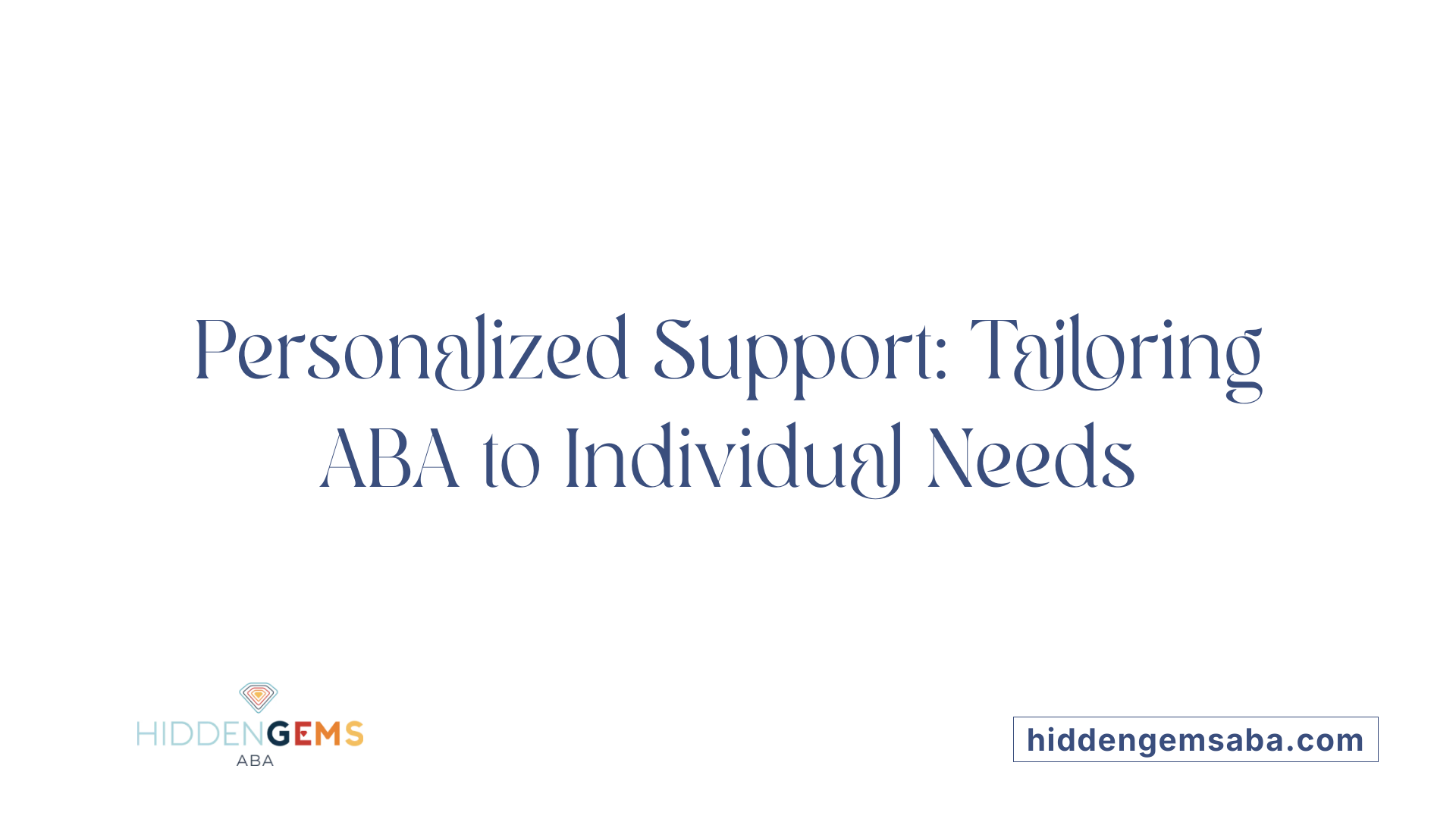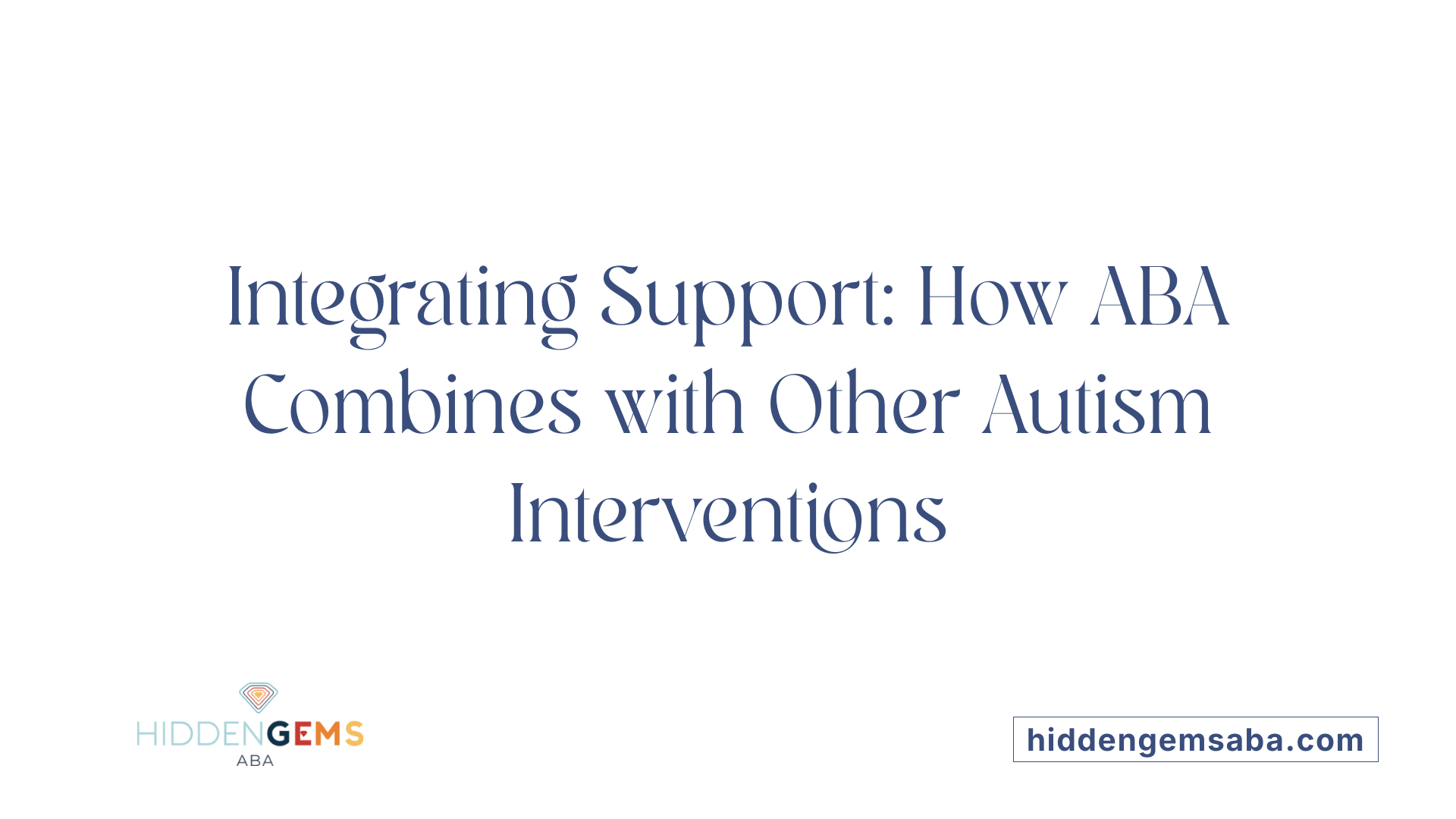Understanding Autism Support Options and Resources
Autism spectrum disorder (ASD) presents a wide range of challenges and strengths, necessitating tailored interventions and extensive support networks. Among the most established therapies is Applied Behavior Analysis (ABA), a scientifically supported approach recognized for its effectiveness in improving skills and reducing problematic behaviors. This article explores ABA therapy’s principles, effectiveness, history, comparison with other treatments, access pathways, financial considerations, and the broader landscape of autism resources, providing comprehensive insights for families, professionals, and policymakers.
What is ABA Therapy and How It Works

What is ABA therapy and what are its main principles and methods?
Applied Behavior Analysis (ABA) therapy is a scientifically supported approach that focuses on understanding how learning and behavior work. It is widely recognized by major health organizations as an effective treatment for autism spectrum disorder. At its core, ABA involves analyzing how behaviors are influenced by their environment and designing interventions to promote positive change.
ABA therapy employs several core principles. One of the most important is positive reinforcement, where desirable behaviors are rewarded to increase their likelihood of occurring again. Therapists observe what happens before a behavior (antecedents), the behavior itself, and what happens afterward (consequences). This analysis helps identify factors that influence behavior and guides the development of tailored strategies.
Methods used in ABA include discrete trial training, where simple, structured tasks are repeated to improve specific skills, and natural environment teaching, which integrates learning into everyday activities. Prompting and shaping are techniques that support gradual acquisition of new behaviors, while functional behavior assessments help determine the purpose of behaviors that may need changing.
Interventions are designed based on comprehensive data collection and analysis, ensuring they are individualized to meet each person’s needs. These programs aim to improve communication, social skills, self-care, and reduce problematic behaviors. Overall, ABA’s goal is to foster meaningful improvements in a person’s quality of life by applying ethical, evidence-based practices tailored to their unique situation.
Is ABA therapy tailored to individual needs?
Yes, one of the strengths of ABA is its flexibility and personalization. Qualified professionals, such as board-certified behavior analysts (BCBAs), design programs that fit each person’s abilities, interests, and goals. These programs are implemented in various settings, including homes, schools, and community locations, using either one-on-one or group instruction.
By continuously monitoring progress through data collection, therapists can adjust interventions to maximize effectiveness. This individualized approach ensures that ABA therapy not only targets specific developmental areas but also respects the preferences and conditions of each person, promoting better engagement and long-term success.
Effectiveness and Evidence-Based Support for ABA

How effective is ABA therapy in supporting individuals with autism?
Research shows that ABA (Applied Behavior Analysis) therapy is considered highly effective for individuals with autism. It is backed by over 20 scientific studies that support its use as an evidence-based treatment. When ABA is started early and tailored to each person’s unique needs, it can lead to significant improvements in various skills.
Studies demonstrate that ABA can help children develop essential life skills, such as communicating more effectively and engaging in social interactions. It also assists in increasing academic abilities and daily living skills, which promote greater independence.
One of the primary goals of ABA is to reduce challenging behaviors, such as aggression and self-injury. Through positive reinforcement—rewarding desired behaviors—individuals are more likely to repeat beneficial actions.
Modern ABA practices have shifted towards more natural and engaging techniques, focusing on learning through play and activities in everyday settings. These approaches not only improve skills but also support participation in community and school environments.
While ABA aims to enhance functioning and independence, it respects neurodiversity and prioritizes personal strengths and interests. This individualized, data-driven approach fosters meaningful progress.
Major health organizations, including the CDC and the American Academy of Pediatrics, recognize ABA as a safe and effective intervention for autism across different age groups. Its proven track record makes it a cornerstone in autism treatment, helping many individuals thrive and build a better quality of life.
Historical Development and Evolution of ABA in Autism Treatment

What is the history and development of ABA therapy in autism treatment?
Applied Behavior Analysis (ABA) therapy has its roots in the behaviorist movement of the early 20th century. It gained prominence in the 1960s when Ole Ivar Løvaas began applying behaviorist principles specifically to children with autism. Løvaas demonstrated that systematic reinforcement techniques could lead to significant improvements in language skills and social behaviors in children with autism.
The foundation of ABA lies in the theories of psychologists like John Watson and B.F. Skinner, who emphasized observable behaviors and the role of reinforcement in learning. Skinner’s work, in particular, provided the tools for designing intervention strategies that could modify behavior through rewards and consequences.
Initially, ABA was characterized by highly structured, intensive programs often involving the use of aversive tools, which aimed to reduce problematic behaviors. Over time, the approach has become more flexible and naturalistic, integrating child-centered methods that respect individual needs. Techniques such as natural environment teaching (NET) and functional behavior assessments (FBA) help tailor interventions to each person.
Throughout the decades, ABA has been supported by extensive research, earning recognition as the most evidence-based treatment for autism. Its consistency and scientific rigor led to the establishment of professional standards, including certification by the Behavior Analysis Certification Board (BACB) and the publication of the Journal of Applied Behavior Analysis.
Today, the evolution continues with a focus on personalization, ethics, and the integration of new technologies. Modern ABA emphasizes respectful, flexible, and engaging intervention strategies designed to improve quality of life and promote independence for individuals on the autism spectrum.
ABA Compared to and Complemented by Other Support Strategies

How does ABA therapy compare or complement other autism support options?
Applied Behavior Analysis (ABA) is widely recognized as one of the most effective and evidence-based interventions for children with autism spectrum disorder (ASD). It focuses on understanding behavior, environment, and learning processes to help increase helpful behaviors and reduce problematic ones. However, ABA is often used alongside other therapies to provide a well-rounded support system tailored to each individual's unique needs.
Speech therapy and occupational therapy are common complementary interventions. Speech therapy centers on improving communication skills, including language development and social interaction, which aligns well with ABA’s goals of fostering functional communication. Meanwhile, occupational therapy addresses sensory issues, motor skills, and daily living skills, complementing ABA's behavioral strategies by targeting developmental and sensory aspects.
While the approaches differ—ABA uses systematic, measurable techniques, and occupational or speech therapies may focus more on developmental and sensory skills—their principles can be integrated. For instance, therapists might coordinate to reinforce communication skills learned in ABA during speech sessions or work on sensory regulation alongside behavioral goals.
Despite the promising synergy, current research highlights some limitations. There is a notable lack of large-scale, high-quality studies comparing the long-term effects of combined therapies directly. Some studies also call for more assessments of how these interventions impact quality of life and functional independence.
Differences in approaches
ABA is a structured, data-driven approach tailored to individual behavior patterns, emphasizing reinforcement strategies to promote learning. In contrast, speech and occupational therapies may adopt developmental, sensory integration, or motor-based methods, which are less behaviorally structured but equally personalized.
Integrated treatment benefits
Using ABA alongside other therapies can create a comprehensive support plan. Children often benefit from improved communication, better sensory integration, and enhanced social skills. When coordinated effectively, these interventions reinforce each other, fostering a more holistic development and increasing the likelihood of positive long-term outcomes.
| Support Strategy | Focus Area | Approach Type | How It Complements ABA |
|---|---|---|---|
| ABA | Behavior, learning, social skills | Behavior-based, structured | Foundation for skill acquisition, targets behavior change |
| Speech Therapy | Communication, language development | Developmental, functional | Enhances language skills, supports social communication |
| Occupational Therapy | Sensory regulation, motor skills, daily living | Developmental, sensory-based | Improves participation in daily activities, sensory processing |
| Social Skills Groups | Social interaction, emotional understanding | Group-based, social approaches | Reinforces social skills learned through ABA |
What is the current view on combining these approaches?
Experts agree that combining ABA with speech, occupational, and social skills therapies offers a broader support network. However, they also emphasize continuing research to better understand how to optimize these integrations. Overall, a multidisciplinary, personalized approach—guided by professionals—tends to provide the best outcomes for children with autism.
Access, Financials, and Broader Autism Resources
How can families and individuals access ABA services, and what are the eligibility and provider options?
Families and individuals seeking ABA services have multiple avenues. Public insurance programs such as Medi-Cal and regional centers are primary pathways that provide access and funding. These programs often require a medical necessity evaluation, which can be obtained through qualified providers like behavior analysts (BCBAs) or licensed psychologists, regardless of an autism diagnosis.
In addition, school districts and community-based organizations also offer ABA therapy, often integrated into special education services or community programs. Private insurance plans, which many families obtain through employer coverage or via marketplaces like Covered California, may cover ABA treatment with varying degrees of scope. To initiate service access, families should start by reviewing their insurance benefits, consulting healthcare providers for evaluations, and connecting with authorized ABA providers or regional centers.
The process generally involves an assessment, followed by the development of a personalized treatment plan overseen by a qualified BCBA. Providers can offer in-home sessions, school-based services, or community-based therapies, tailored to meet individual needs.
What are the financial considerations and resources to support ABA therapy?
Understanding the costs of ABA therapy is essential. Session rates typically range from $50 to $150 per hour, with monthly expenses depending on the number of sessions, which can be between 10 to 40 or more hours weekly for intensive programs.
Insurance coverage significantly impacts affordability. All 50 states have laws mandating some level of ABA coverage, but the extent varies—some states have caps or limits on the number of covered hours, while others require comprehensive coverage.
Families should verify their insurance policies for details on coverage, including requirements for diagnostic documentation and treatment plans from qualified professionals such as BCBAs.
Out-of-pocket expenses may include co-pays, deductibles, and non-covered services, which can add up. Insurance appeals processes allow families to contest denials when documentation supports medical necessity.
To assist with costs, organizations like ACT Today! and Autism Speaks provide grants and financial assistance programs. Additionally, Medicaid waivers and regional grants offer further financial support, helping to make ABA therapy more accessible.
What resources are available for autism support, including educational materials and strategies?
An array of resources exists for families, educators, and healthcare providers. The CDC offers free resources such as developmental milestone monitoring tools, awareness campaigns, and fact sheets to support early identification and ongoing support.
Organizations like the UC Davis MIND Institute and Autism Speaks provide up-to-date research, training programs, and communication tools designed for families and professionals. Support strategies emphasize individual-centered, safe, and respectful approaches, rooted in best practice guidelines from organizations like NICE and NHS.
Community programs often include social skills groups, sensory integration therapies, and educational materials aimed at promoting inclusion, independence, and lifelong development.
Additionally, online platforms, podcasts, and webinars offer valuable insights and practical strategies for navigating autism support across the lifespan. These resources help families advocate for their loved ones and participate actively in tailored intervention planning.
| Access Pathways | Eligibility Requirements | Provider Options | Funding Resources |
|---|---|---|---|
| Public insurance (Medi-Cal, regional centers) | Medical necessity evaluations | BCBA-led clinics, in-home, school-based | Grants, Medicaid waivers |
| Private insurance plans | Diagnosis confirmed by qualified professional | Community programs, private practices | State-specific support programs |
| Schools and community programs | IEP recommendations | Group therapy settings | Nonprofit organization grants |
| Self-funding or out-of-pocket | Personal choice and evaluation | In-home, community, school | Family financial aid, advocacy grants |
In summary, accessing ABA services requires coordination with healthcare providers, insurance verification, and engagement with qualified providers. Financial planning involves understanding insurance benefits, exploring grants and subsidies, and utilizing local and national support resources. A comprehensive array of educational and support tools is available to empower families and professionals in creating effective, individualized support plans for those with autism.
Fostering an Informed, Inclusive Approach to Autism Support
Choosing the right autism interventions requires careful consideration of individual needs, goals, and circumstances. ABA therapy, supported by extensive scientific research and professional standards, offers valuable opportunities for skill development and independence. Complementing ABA with other therapies and utilizing available resources—from educational materials to community support—can significantly enhance quality of life for autistic individuals and their families. Accessing these resources involves navigating insurance options, funding programs, and regional services, often requiring proactive engagement from families and caregivers. Ultimately, fostering an informed, compassionate, and individualized approach ensures that every person on the spectrum receives the support necessary to thrive and participate fully in their communities.
References
- Applied Behavior Analysis (ABA)
- Autism Society of America Shares Applied Behavior ...
- Autism Resources for Parents & Professionals: ABA ...
- ABA Educational Resources
- Treatment and Intervention for Autism Spectrum Disorder
- Autism Resources
- ABA for Autism - AIR Autism Interventions and Resources ...
- Behavioral Health Treatment | Children with Autism Spectrum ...
- Autism Resources | ABA Therapy
- Autism Speaks: Autism support, resources & advocacy






